2018 - 2019
Healthy Brain Study Annual Report
Over the past year, the Emory Healthy Brain Study has worked to discover biomarkers that will predict Alzheimer’s disease and other dementias. We reached some incredible milestones in 2018. Learn more about the data we've collected, the team who helped us get there, and the participants who made it all possible.
If you had a chance to change the world, would you?
Welcome to the Emory Healthy Brain Study. This is your opportunity to partner with leading physicians at Emory University and help make discoveries that will change our understanding of aging and age-related diseases for generations to come.
It's your contribution to a better future.

Our 3,000 Goal
3,000 registrants. That’s the number we’re aiming for, and we’re proud to say we’re 37.7% of the way there. We’re starting earlier; instead of trying to treat current diagnoses, we are looking for a diverse group of healthy individuals who are not experiencing symptoms of Mild Cognitive Impairment or dementia to enroll in the study. Our participants come from all ages, races, and walks of life. Because of the diversity required for this study, we utilized several different methods to reach potential candidates.
Projected Visits
Participants have started returning for their second visits, but that doesn’t mean we’ve stopped baseline visits. Along with second-year visits, we’re estimating an additional 720 baseline visits for 2020.
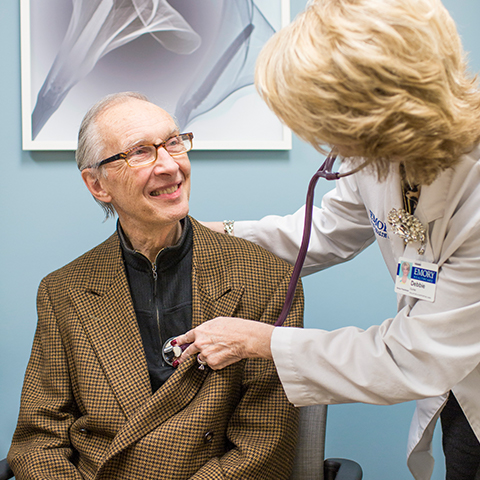
Follow-Up Visits
Follow-up visits are crucial to our research as we study the changes our bodies undergo with age, and we ask that participants return every two years for updated testing and measurements. We are excited to announce the growing number of our participants returning for their second visit with more scheduling their follow-up visits every day.
How can you get involved?
Help us change our understanding of aging and age-related diseases for generations to come. It’s your contribution to a better future.
Have you seen our new space?
A lot has changed in the past year. One of the most notable is the new space we are now utilizing for our research. Located at 6 Executive Park Drive next to the Emory Brain Health Center, the new Alzheimer’s Clinical Research Unit houses many of Emory’s cognitive neurology programs including the Emory Healthy Brain Study. For those who have not yet seen the space, below is a virtual tour that will let you experience our incredible new facility prior to your next visit.

Making a Little Go a Long Way
In our last report, we highlighted the incredible journey cerebral spinal fluid (CSF) and blood samples undergo from participant to research and storage. When half of the CSF sample is divided into smaller aliquots, each one goes into a tube measuring just under an inch and a half. Since we first started this study, we’ve collected a lot of samples. To put it in perspective, if we stacked all of the CSF aliquot tubes, it would measure nearly 1000 feet taller than the One World Trade Center in New York. If we stacked all of the CSF tubes for samples we’ve collected (aliquots plus storage), it would be nearly 800 feet taller than the tallest building on earth. We intend to keep this number growing as we work to study more samples in our efforts to identify the biomarkers that will allow us to predict the development of Alzheimer’s disease.
Download PDF
Innovation at Work
As our knowledge grows, so do our methods and technology. Learn more about the innovative advancements being implemented into our research.

MRI Scans Added
We’re making some changes to the data being collected. To enhance the data being collected, we will be conducting short MRI scans at our dedicated MRI suite during EHBS visits.

Ipad-Based Eye Tracking
Imagine a way to detect memory decline that's automated, language-free, and can be done using a device commonly found in many homes. Our researchers are making it a reality with the development of eye tracking tests that utilize the front facing camera of an iPad.

New Cardiology Tech
We’ve expanded our resources for performing cardiovascular testing. With a dedicated cardiology exam room and backup cardiology tech, we’re able to work more efficiency and provide more comfort to our participants.

Decreased Visit Length
To better accommodate participant schedules, we are now splitting what was typically one long visit, into two shorter visits. This change provides more schedule flexibility for participants and allows our researchers to get MRI scans during one of the visits.
Participants
Meet the people who made it all possible – our participants. Their willingness to volunteer their time to our research has led to some astounding discoveries.
EHBS Participant Appreciation Event
This year we were excited to hold our first event celebrating the most important people in our research: our participants! The first EHBS participant appreciation event, done in the form of a brunch, was open to study participants plus a guest. Our study researchers, including the principal investigator, Dr. James Lah, presented on various subjects like the current trends in Alzheimer’s disease research, how lifestyle changes can impact our brain health, and the progress being made on understanding the link between our cardiovascular health and neurodegeneration. Door prizes were given out and guests were able to learn more about published research stemming from the data we’ve collected since the start of the study. We had more than 300 people attend the event with numerous guests either scheduling their follow-up visits or starting their study journey with the Emory Healthy Aging Study. On behalf of everyone on the team, we’d like to thank everyone who attended and provided feedback on how we can improve the next event.
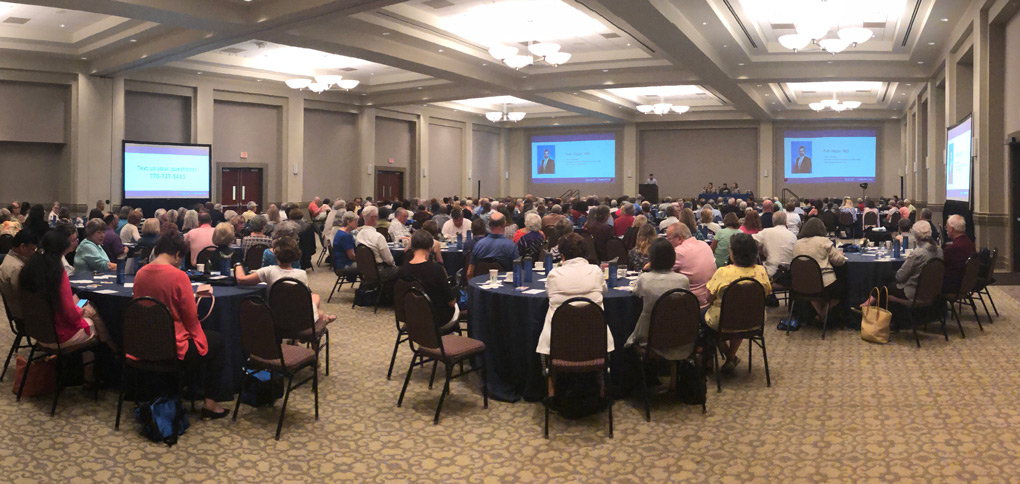
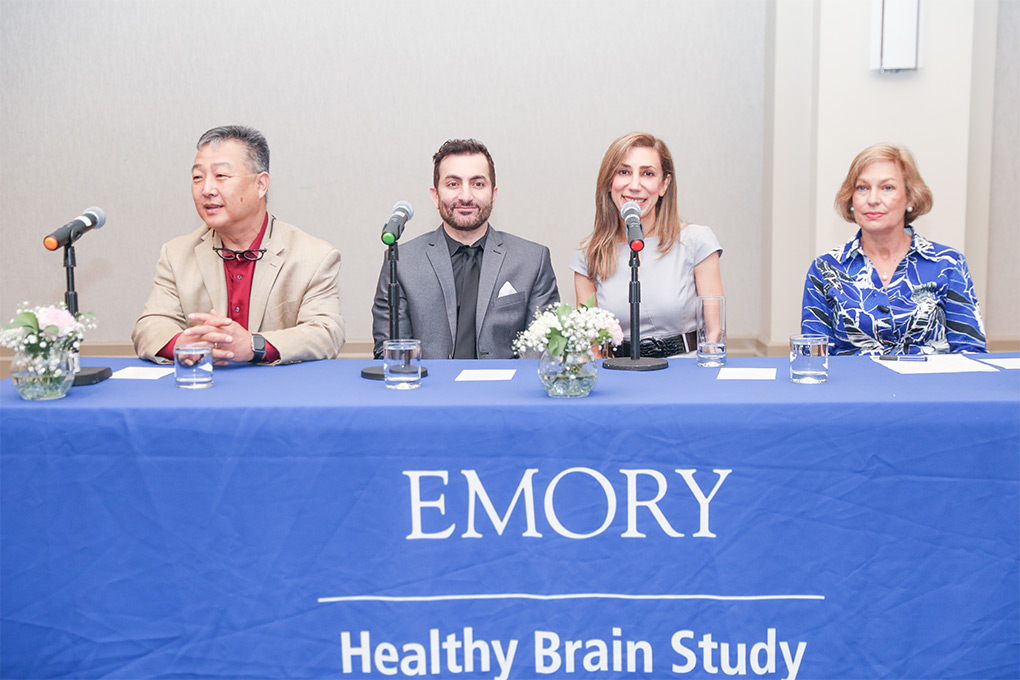
Participants by Age
It can take years for symptoms of Alzheimer’s disease and other dementias to manifest. By working with candidates before they exhibit symptoms, we hope to identify biomarkers that will enable us to predict disease. With an effective means of prediction, we can then focus more on treatment and even prevention.
Participants by Gender & Race
We strive for diversity within the Emory Healthy Brain Study. It’s important that our research discovers how different people from all walks of life show signs of dementia and Alzheimer’s. So far, a large portion of our volunteers has been Caucasian females. To diversify our candidate pool, we used Facebook to reach other races and genders. By increasing our focus on African-Americans and male audiences with highly segmented social media advertising, we’re helping to bridge the gap in race and gender with our current volunteers.


Participant Story:Brenda Jefferson
New to clinical research, Brenda hopes her participation will serve as an inspiration to other women in the African American community.
Health History Questionnaire
Participation in the Emory Healthy Brain Study begins with the completion of our Health History Questionnaire. This data collection process helps us better understand how we age and age-related diseases. It’s not uncommon for study participants to report a variety of health conditions, and we consider these factors when looking for predictive biomarkers.
Have you ever been diagnosed with Diabetes?
Have you ever been diagnosed with High Blood Pressure?
Have you ever been diagnosed with High Cholesterol?
Participant Body Mass Index
Participants by Location
Because participation in the Emory Healthy Brain Study involves an on-site visit once every two years, it is not surprising that most of our participants are from the metro-Atlanta area. What might come as a surprise is how far some people travel to participate in our study, some traveling for hours across hundreds of miles. There is no doubt, whether it’s a few miles or a few hundred miles, we have some of the most dedicated participants who are helping us lead the fight against Alzheimer’s.


Participant Story:Michael Edwards
With a family history of dementia and witnessing the affects it has on others, Michael knew it was time to do his part in the fight against it.
Procedures
The variety of measurements and samples collected provide us with a wealth of data points to examine.
What’s Changed?
If it’s been a while since your last visit with us, you might notice some things have changed. To better understand the changes occurring in our brain as we age, we are now including MRI scans as part of the EHBS visit. This will add another way to track changes occurring in our brain. Since we will be adding MRI scans to the EHBS visits, we have split EHBS participation into two separate visits. This allows us to more effectively accommodate people’s schedules without sacrificing the data being collected.
Breakdown of Biospecimens and Tests
Cognitive
In the Emory Healthy Brain Study, we administer various cognitive and neuropsychological tests that measure aspects of brain function, including memory, language, visuospatial skills, attention, and higher-order thinking. These tests are validated measures used in both research and clinical practice:
- to help characterize individual cognitive abilities, such as strengths and weaknesses
- to monitor changes in functioning that may occur during the process of normal aging or as a result of disease or injury
- to better understand brain-behavior relationships
Repeated assessments using these same measures can help us understand the changes that occur across the developmental lifespan of mid-life and older adults. When we compare test scores to other aspects of health, we can elucidate the consequences of certain genetic and lifestyle practices, helping us to identify fruitful areas for health intervention and treatment.
We have also made some recent additions to our cognitive testing battery. A year into the study, we were given permission to use a non-published research instrument to study learning and memory that has strong relationships to Alzheimer’s disease pathology.
Eye Tracking
Some of the tasks you complete during the study are to detect very early changes in cognition, likely before you would even notice any altered function. One of these is the eye tracking task we use to help us study how you look at images. Simply the way you naturally view images can give us insight into how you are processing information. We hope this type of technology will help us minimize the number of other tests we ask you to complete during your visit. Experience has told us that people are much more relaxed viewing pictures than they are counting backwards or remembering long lists of words. If you’ve had a visit with us within the last two years, you likely completed this task using a desktop monitor. We are currently in the process of streamlining our technology, and by the time you return, this task will be administered via iPad. The hope is that participants will eventually be able to perform this test remotely!

Questionnaires
Health History Questionnaire
We ask all study participants to complete the Health History Questionnaire (HHQ) when they first enroll in our study. The information that participants provide is critical for our efforts to study aging as part of the Emory Healthy Aging Study, and, more specifically, cognitive aging as part of the Emory Healthy Brain Study. In addition to basic demographic information, the information participants provide about their lifestyle, medical history, family history, and other life experiences, is invaluable. We are learning more about how daily lifestyle choices, like smoking, physical activity, and the foods we eat, influence the risk of developing Alzheimer’s disease. Knowing about a participant’s past medical and family medical history helps researchers to understand how different medical conditions in individuals and families influence the development of Alzheimer’s disease. Other information provided by the HHQ offers researchers additional avenues to identify potential factors that either increase or decrease the chances of developing Alzheimer’s disease.
PHQ-8 and GAD-7
In older adults, depression, anxiety and Alzheimer’s disease are often seen together, but the nature of the relationship is not clear. Determining how depression and anxiety are related to the development of Alzheimer’s disease in its earliest stages will clarify whether depression and anxiety simply co-occur with Alzheimer’s disease, or whether they act to increase the chances of developing Alzheimer’s disease.
Microbiome
Answers to questions on this survey are important to understand and interpret research using the microbiome sample. The microbiome can be affected, usually transiently, by things like acute illness, a course of antibiotics, or a recent colonoscopy.
We are learning more about how daily lifestyle choices, like smoking, physical activity, and the foods we eat, influence the risk of developing Alzheimer’s disease.
Diet Questionnaire
Dietary habits can influence the chances of developing risk factors for Alzheimer’s disease, as well as Alzheimer’s disease itself. In conjunction with other data collected during the EHBS, dietary data will allow researchers to study how nutrients and dietary patterns are related to the earliest stages of Alzheimer’s disease.
Post-Visit Survey
We are currently in our third year of the study. Many advancements have already been made to our process, thanks in large part to comments from our constituents. However, we are continually looking to improve the experience for current and new participants. This survey, which was implemented after our first year, is a way for us to gather constructive feedback about what a visit really looks like from their perspective, and do everything in our power to make it enjoyable!

Cardio
One of the focuses of our center is better understanding the interface between the brain and heart. There is no question our cardiovascular health impacts a lot of different systems within our bodies and is why it receives as much attention as it does. What is not as well understood are the impacts our cardiovascular health has on our brains, more specifically its role in neurodegeneration and diseases like Alzheimer’s. Anyone who has seen a primary care physician is probably familiar with the routine cardio testing done. Your pulse and blood pressure are tests we’ve become accustomed to, but we’re taking it even further. For example, we now know that hypertension is more than just a blood pressure problem – there are a lot of different factors that affect this. In the Emory Healthy Brain Study, we conduct several additional cardiovascular tests:
Arterial Pulse Wave Analysis
This is also known as the arterial stiffness test, and it is used to measure the stiffness of your blood vessels. This also measures your carotid pulse.
Flow-Mediated Dilation & Endo PAT
This test measures the blood flow in your arm using an ultrasound.
Carotid Intima-Media Thickness (CIMT)
This scan is a non-invasive test that scans the carotid arteries in the neck to detect plaque buildup and increased thickness of the artery wall.
Electrocardiogram (ECG)
This test is a standard measurement of your heartbeat and heart rhythm.
These tests allow us to look at heart health from multiple dimensions. For example, we know microcirculatory disfunction increases the risk of heart disease. By using the Endo PAT test, we are able to see how much micro vessels have dilated and are now seeking to understand how this translates into the development of dementia.
We do not yet know which of these tests will be the most important, but we are comprehensively looking at cardiovascular health holistically to determine the what elements are impacting our brain health. By measuring traditional risk factors and taking it one step further with lab-specific measurements, we hope to increase our ability to predict the development of Alzheimer’s disease.
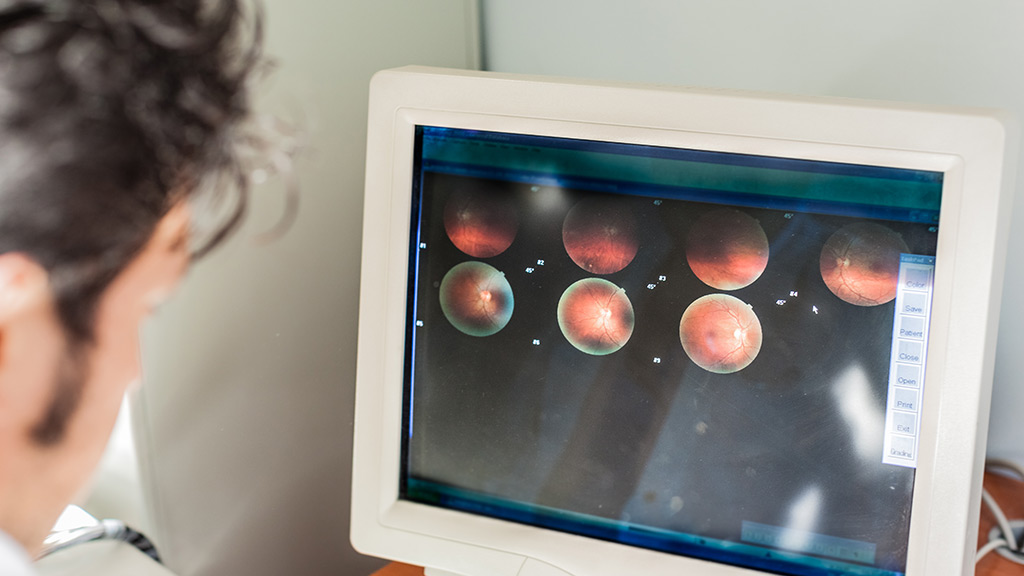
Neurovision
The final procedure conducted at the biennial visit is retinal imaging. For those who completed the procedure in the early part of the study, you will be happy to learn that we have decreased the number of images that we capture by more than half. This means it will probably take longer for your eyes to dilate than it will to take the pictures!
This procedure holds great promise and could offer many advantages, both as an early screening tool and as a way for us to provide ongoing monitoring. Although we are still in the early days of validating the technology, we hope that the images will give us an early glimpse of both when and if amyloid plaques begin to accumulate. If we can successfully monitor the start and progression of amyloid burden by way of retinal imaging, we may be able to use a tool such as this to replace recurring lumbar punctures. By extension, we should also be able to monitor decreases in amyloid burden. This means clinicians could intervene quickly with promising therapies developed to halt or reverse amyloid buildup and monitor the effectiveness of the treatment without resorting to costlier procedures such as PET or lumbar punctures.
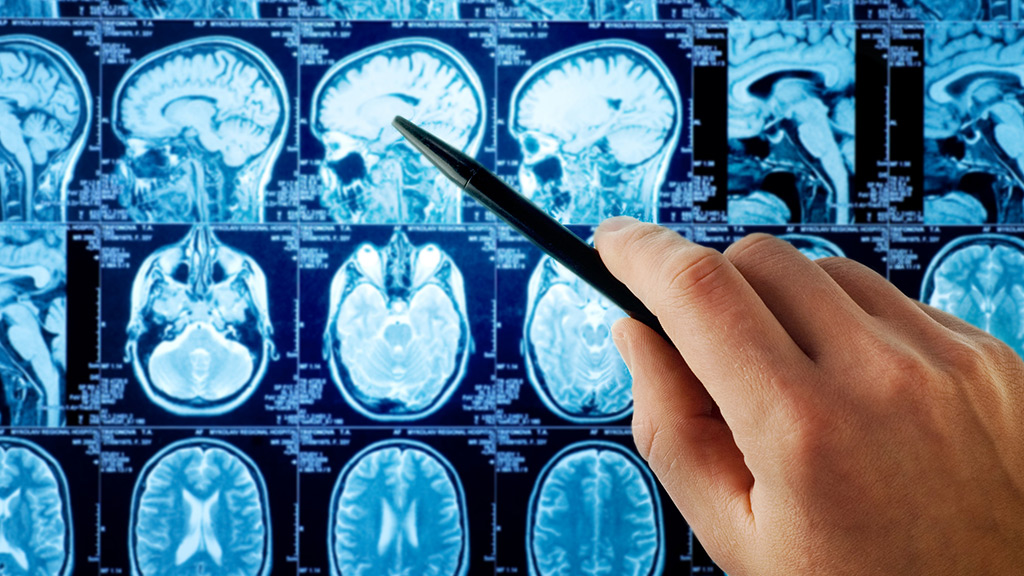
Blood, Cerebral Spinal Fluid (CSF), and Microbiome
The primary goal of the Emory Healthy Brain Study is to find new biological markers to predict Alzheimer’s disease. To help achieve that goal, we ask study participants to provide blood, cerebrospinal fluid, and microbiome samples Each of these samples provides unique information about a person’s health.
Blood
Many substances can be measured in blood, which makes blood samples critical for research aimed at understanding Alzheimer’s disease. The information gained from blood samples can give insight into inflammation, infection, cholesterol levels, kidney and liver function, and sometimes help to predict the course of disease. We hope to find a blood test or collection of blood tests that will allow us to predict Alzheimer’s disease.
Cerebrospinal Fluid (CSF)
Just as we are looking for a blood marker for Alzheimer’s disease, we are also looking for new markers in cerebrospinal fluid (CSF) that can predict Alzheimer’s disease. CSF is produced by the brain and bathes the entire brain and spinal cord. CSF is special because it allows clinicians and researchers to detect and measure substances that tell us about brain health that cannot be measured in blood.
A portion of each participant’s blood and CSF samples are used up front for standard measures that a primary care doctor might also check, like blood cell counts, as well as standard Alzheimer’s disease research measures. These inform researchers about the overall health of participants and help understand new research results. Another portion of each sample is stored in a secure freezer and catalogued for future research as we continue to make new discoveries.
Microbiome
The microbiome is the collection of microscopic organisms that live in your body. The intestines alone are home to trillions of microscopic organisms and even newborns come into the world with a robust microbiome. Human development, lifestyle, and aging all affect the microbiome. The microbiome contributes to your health by protecting you from harmful bacteria, helping you to digest foods, regulating metabolism, and producing substances beneficial to your health, like vitamins. Research is demonstrating that healthy lifestyles can contribute to a healthy microbiome, which in turn can contribute to brain health and health in general. We plan to use participant microbiome samples to study what role the intestinal microbiome plays in the development of Alzheimer’s disease.
Research
By identifying predictors of Alzheimer’s disease, we may be able to slow, treat, or even prevent it someday. Supporting the researchers is a dedicated team that leads participant visits, collects samples, and participates in outreach.
Alzheimer’s Disease vs. Dementia
Dementia is a generic term for severe deterioration of memory and other cognitive abilities. It can be caused by many different disorders that impair the function of the brain. Alzheimer’s disease is the most common form of dementia, and accounts for 60-80% of cases.1
The development of Alzheimer’s disease should not be considered a part of “normal aging”, although advanced age is the greatest risk factor. The most common symptom in the beginning is trouble remembering new information. Other symptoms include mood and behavior changes, confusion, disorientation, and eventually patients have trouble speaking and walking. As the disease progresses, the severity of symptoms increases, and eventually leads to death.
When a patient with cognitive problems goes to the doctor, the first thing the doctor does is rule out other possible causes, some of which can be treated (such as infections, interactions of certain medications, vitamin deficiencies). When all other possible causes have been ruled out, a diagnosis of Alzheimer’s disease is made.
Alzheimer’s disease is the most common form of dementia, and accounts for 60-80% of cases.
Physical Changes in the Brain
Evidence currently indicates that the root cause of Alzheimer’s is the accumulation of plaques and tangles in the brain. Plaques are created when beta-amyloid protein collects in between nerve cells in the brain, and tangles are a result of tau protein build-up within cells. This change in structure causes many other things to go wrong, and eventually leads to the deterioration of the nerve cells and their connections, which in turn causes dementia.
Current clinical trials are designed to prevent beta-amyloid and tau from accumulating, and to preserve the function of nerve cells. There are many potential ways to approach this therapeutically, but we don’t yet know which ones are most likely to lead to successful treatments; this is why we need a variety of clinical trials.
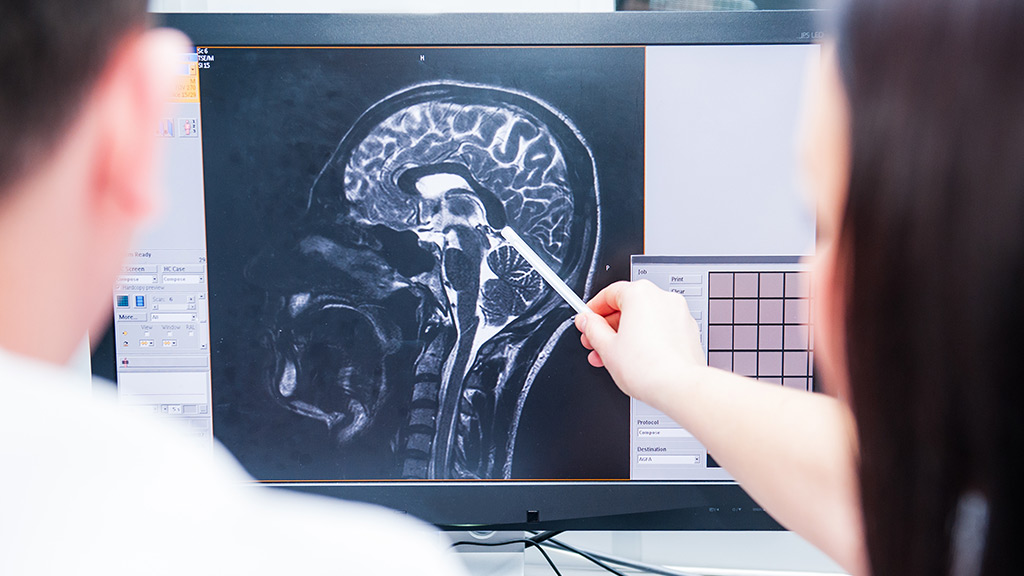
Enrichment Criteria
Family History
Individuals who have a first-degree relative who has been diagnosed with Alzheimer’s disease are more likely to develop the disease as well. It’s also important to note that multiple family members with a diagnosis increases this risk even more. Typically, if a disease is seen in multiple generations of a family, there may be a genetic component contributing to its development. Researchers have found several genes that increase the risk of Alzheimer’s. Apolipoprotein E-e4, or APOE-e4, is the first gene identified. These so-called “risk genes” only increase the chances, but do not allow physicians and researchers to definitively say that an individual will develop the disease.
Cardiovascular Disease and Diabetes
If you think about the way the body is designed, it’s not hard to imagine that cardiovascular health could have a large impact on the development of Alzheimer’s disease. The heart is responsible for pumping oxygenated blood to our organs, and the brain has one of the densest concentrations of blood vessels in the body. Thus, when a conditions compromises this ability, either by damaging the heart or the blood vessels, the brain doesn’t receive as much oxygen and function decreases. These conditions, including heart disease, diabetes, stroke, high blood pressure, and high cholesterol, increase the risk of developing Alzheimer’s disease. Studies have also suggested that the presence of plaques and tangles is more likely to lead to Alzheimer’s disease if the blood vessels have been previously damaged.
African Americans and Latinos
According to the Alzheimer’s Association, African Americans are twice as likely to develop Alzheimer’s disease when compared to Caucasians, and those individuals with Latino ethnicity are one-and-a-half times more likely. It is extremely important for the quality and accuracy of our data and conclusions that we include participants from all different backgrounds in this study.
Sources
1. What is Alzheimer’s? (2007, January 7). Retrieved May 1, 2018, from https://www.alz.org/alzheimers_disease_what_is_alzheimers.asp
Meet the Study Team













Expanding Research
A lot is happening in the field of Alzheimer’s disease research. Along with all of the work being done by the Emory Healthy Brain Study team, we’re excited to see the following programs growing out of the recognized need for additional efforts in the Alzheimer’s landscape.
Cognitive Empowerment Program
The Mild Cognitive Impairment Empowerment Program aims to provide people with MCI and their care partners and families an opportunity to participate in comprehensive lifestyle programs that promote joy, purpose, health and wellness.This unique comprehensive lifestyle program if for patients and families in Emory’s Cognitive Neurology clinic who receive a diagnosis of MCI. It addresses physical activity, cognition, functional independence, social engagement, wellbeing, and education. Fellows (participants) of the program will receive education, personalized assessments and goal-setting sessions designed to empower them as they seek to implement healthy brain interventions. Through a unique partnership between Emory’s Brain Health Center and Georgia Institute of Technology, the MCI Empowerment Program hopes to revolutionize the experience of people affected by MCI by creating a comprehensive approach that can be replicated nationally and internationally.
Georgia Memory Net
Georgia Memory Net (GMN) is a statewide program dedicated to the early diagnosis and treatment of Alzheimer’s disease and related dementias. Supported by the Georgia Department of Human Services’ Georgia Alzheimer’s Project, GMN provides Georgians and their Primary Care Providers with the tools they need for accurate diagnosis, appropriate treatment, and long-term support. Our programs encourage Medicare-eligible adults to take advantage of their Annual Wellness Visit a Medicare paid health screening by PCPs that includes a 3-minute screening tool used to detect memory problems and related issues. In turn, GMN provides healthcare professionals with the resources they need to help diagnose patients experiencing memory loss or cognitive impairments, and provides initial support and education while linking patients and care partners with community resources to provide ongoing support.
